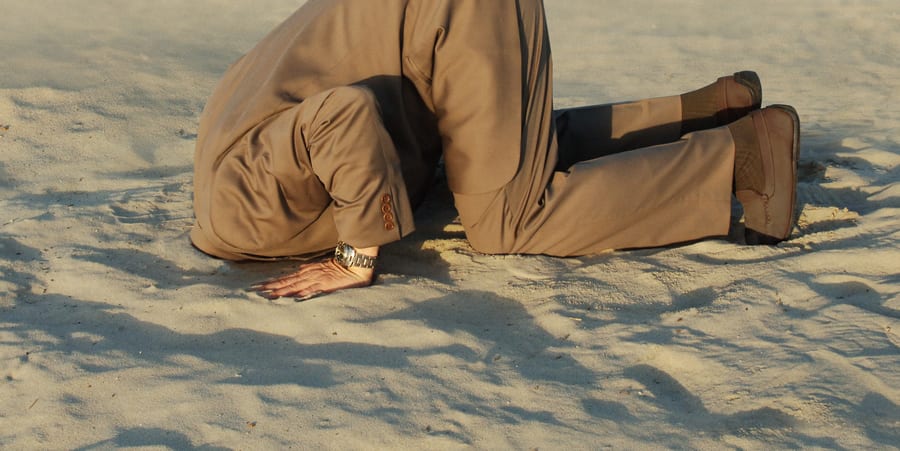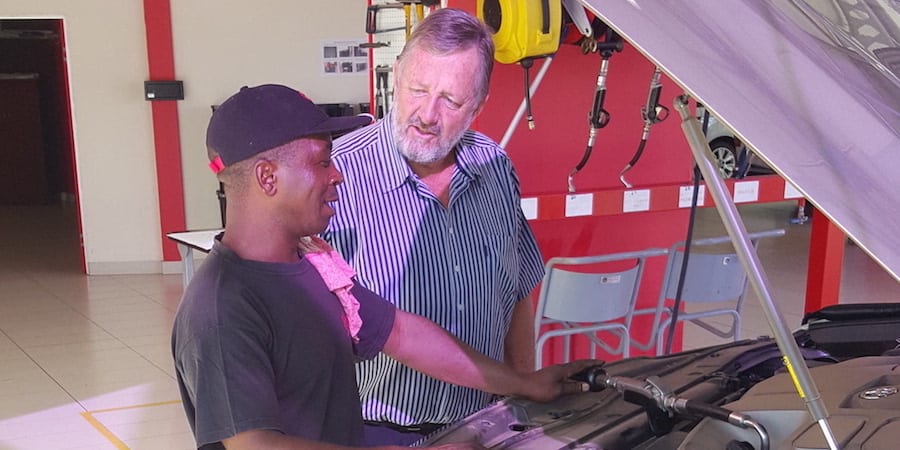
The Wells Fargo scandal teaches us lean must be nurtured
OPINION – The latest banking scandal had us all wonder whether Wells Fargo has lost its way. But how does a pioneering bank that once had lean at its heart betray its core values so profoundly?
Words: Boaz Tamir, President, Israel Lean Enterprise
Photo courtesy of: DW labs Incorporated / Shutterstock.com
Richard Kovacevich, the former CEO of Wells Fargo, once declared to one of his colleagues at Stanford University that he would never become part of a banking system controlled by a fossilized, conservative hierarchy.
After he joined Citicorp Bank in New York in 1975, Kovacevich embarked on a mission to change the bank's business model, helping it to abandon short-termism and focus on customer needs today and into the future. In the process, he turned around the bank's branching system in the Big Apple, making it profitable in three years at a time when customers didn't trust ATM machines (their use was being pioneered) and employees thought the new machines would cost them their jobs. On that occasion, Kovacevich showed both an unorthodox view of how banking works and a great ability to please customers and engage workers.
In 1998, he was appointed Chairman and CEO of Wells Fargo, following its complex merger with the Norwest Corporation of Minnesota. Building on the experience he had gained until then, Kovacevich developed a strategy based on the idea of "banking as a personal service": a basket of financial services was designed to provide a customized response to customer needs. That's also when the bank teller was renamed a customer's Personal Financial Officer (PFO).
This is considered by many as the first application of lean ideas in the banking sector, as a starting point for the cultural and organizational transformation of one of the largest banks in America. Under Kovacevich's leadership, the business performance of Wells Fargo improved, and the bank became a leader in its field.
At the end of 2008, at the height of the financial crisis, Wells Fargo management rejected the practice of issuing taxing bonds, which was becoming very popular among US banks, and proved that focusing on integrity and long-term customer value will eventually award both customers and shareholders.
Leveraging its business and market position, Wells Fargo was able to beat financial giant Citigroup in the battle to acquire ailing Wachovia. The merger doubled Wells Fargo's size and allowed it to enter the market in the Northeast of the United States (Wells Fargo's footprint until then was mostly in the Western part of the country), while fulfilling its purpose of providing a basket of combined financial services to the customer. At the same time, however, the transition from "boutique" bank to financial giant presented a challenge to Wells Fargo's managers: to maintain the organizational culture of an institution that offers personal banking services, while also delivering mass customization to millions of customers from coast to coast.
CAN A BIG BANK BE A GOOD BANK?
Kovacevich adopted lean principles to create an organizational culture that would support his vision of personal banking. Management at Wells Fargo had to undergo a lean transformation and redesign the bank's business and operational processes. This led to a shift in the organization's basic thinking and management mindset.
Led by Kovacevich, the management team at Wells Fargo came to view the development and long-term employment of people as key to achieving their goal of creating value for customers, and decided to change the remuneration package offered to managers and employees from cash bonuses to stock options, thus turning the workers into partners in the bank's success (or failure).
Kovacevich, who saw himself as an entrepreneur (a leader of change, if you will) more than as a technocrat operating in a hierarchical organization, began a process of transferring professional leadership on to John Stumpf, who had begun his own banking career in the credit department at Norwest, where he had met Kovacevich many years before. The process of an orderly transition was accomplished when Stumpf was appointed as president of Wells Fargo in 2005, CEO in 2007, and Chairman of the Board in 2010.
Sadly, Stumpf completely turned the lean-inspired principle of value creation on its head. Instead of building value streams that would allow the customer to pull financial products that would meet his or her needs from her personal banker to the extent and at the time that most suited her, Wells Fargo started to ask its tellers to push (through marketing and selling) a comprehensive package of products that included eight items: tellering, loans for ongoing needs, mortgages, car financing, credit cards, insurance, capital market services, and foreign currency exchange. The mantra that Stumpf repeated to the bank's sales personnel was "Eight is great".
In order to accelerate the pace of growth and boost profitability, KPIs were set that encouraged tellers to push the package of eight products on the customers at the first opportunity, before they had even ascertained their needs or heard their demands. Thus, for example, getting a loan became linked to opening an account, receiving a credit card, creating an insurance program and starting an account for stock trading.
This is when things went south.
According to Forbes, from 2011 on, under directions from their managers, bank clerks (or Personal Finance Officers) opened some 1.5 million deposit accounts and a half a million credit accounts without the permission or knowledge of their customers. As a result, Wells Fargo was able to charge some 2.6 million dollars in commissions – hardly the definition of value! In fact, this system of sales and banking had tragically turned value creation into waste generation. The abandonment of Kovacevich's system and the basic values that he had introduced at the bank marked the point when Wells Fargo took the well-travelled path of traditional banking, whose purpose is the creation of value for stockholders and managers (in the form of profitability and growth), rather than for customers.
The payment of a penalty of $185 million to the US regulator was only the opening volley. Soon after that, following an embarrassing investigation by a Senate Committee, CEO and Chairman John Stumpf resigned. The journey towards rehabilitation had started, with some 5,500 managers and employees, who had been directly implicated in the shameful activity, being fired. There is no doubt that the damage to the bank's reputation will force John Stumpf's successors to think very carefully about next steps and the bank's value proposition.
THE LESSON TO LEARN
Under Kovacevich, Wells Fargo had become a successful model of lean transformation in banking and earned a position of leadership in the market. In contrast, his successor retreated to the traditional view of "modern" management, which ended up turning the bank into a disgraced organization that has angered millions.
There is an important lesson we can learn from the Wells Fargo debacle. Change and the implementation of an organization's basic thinking and mental model are ongoing processes, and the inability to sustain lean efforts as the constant force behind the creation of waste-free value can turn management into the chief destroyer of a company's status and lead to irreparable damage.
Did Kovacevich's attempt to change the nature of the banking system fail? Was he right when, during his studies, before he headed a bank, he said that at the end of a process the system will always go back to its old ways and that its original character cannot be changed? Time will tell, as this question remains open for bankers, customers and regulators, who are now called to monitor the activities of an industry that has proved utterly unprepared to provide its clients with genuine value.
THE AUTHOR

Boaz Tamir is founder and president of Israel Lean Enterprise. He has extensive experience in entrepreneurship, turn around processes, company management, and academic research, and has contributed his knowledge to the business development and marketing of some of the largest and most successful organizations in Israel. Tamir is a founding and managing partner of Montefiore Partners Venture Capital Fund and has also served as founder and director of Romold Group, a multinational company specializing in environmental technologies and the development and production of infrastructure products for water and waste-water management and telecommunication. Tamir holds a Ph.D. in Political Science and Management from MIT
Read more


FEATURE – There are five dimensions to a lean transformation – purpose, process, people, management behaviors, and mental models – and it is the role of leadership to adjust its stance to each of them.


FEATURE – In the final article of his series on levelled production, the author debunks the belief that the Glenday Sieve is a method that can only be used in a manufacturing environment.


FEATURE – The introduction of a new process can be disruptive to an organization’s improvement efforts. But what if the process were designed to be lean from the start?


PROFILE - Three decades in Toyota South Africa and an ability to see the value stream as a whole are helping Terry O'Donoghue, COO of Halfway Toyota, to bring lean thinking to a chain of car dealerships.

